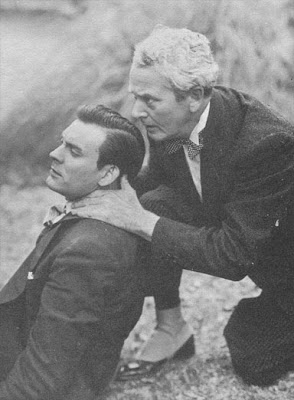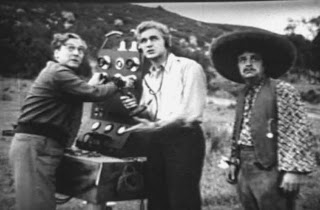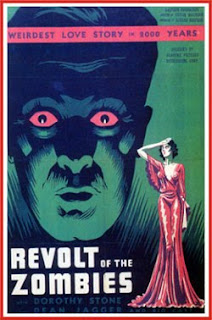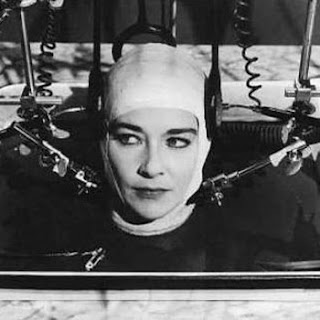Madmen of Mandoras (1963)
Starring: Walter Stocker, Audrey Caire, Carlos Rivas, John Holland, Dani Lynn, and Pedro Regas
Director: David Bradley
Rating: Three of Ten Stars
After his future father-in-law, and inventor of the ultimate defense against chemical warfare and nerve agents (Holland), is kidnapped, crack government agent Phil Day (Stocker) tracks him to the Central American island nation of Mandoras. Here, Day discovers a monstrous plot to murder millions of people, a plot orchestrated by Hitler's bodiless head that had been saved in a jar by loyal Nazi scientists.

Someone with a hand in creating the animated show "Futurama" must have seen this movie, because the Hitler-head-in-a-jar is identical in appearance and function to the many preserved heads on that show. And it's almost as ridiculous, even if suspense and perhaps even horror is what the filmmakers were going for.
"Madmen of Madoras" is such a mess of a movie, so badly conceived and executed that it emerges as one of those films that truly is "so bad it's good." The rating I've assigned it reflects the fact that it wasn't intended to be funny, but the fact of the matter is that this film is a perfect addition to any Nazi- or Mad Science-themed Bad Movie Party.
The premise is a wonderful one--with Nazis in control of a small nation, led by Hitler's evil mind made immortal--but the extreme low budget and the haphazard way the film unfolds makes it more funny than suspenseful. From the government agent who not only lets his girlfriend tag along on a dangerous mission but also goes shopping with her, to hilariously inept Nazi bad guys and their equally inept peasant opposition with bad Spanish accents, and a mighty final showdown fought with grenades against badly edited stock footage, this film is a fast-paced romp of non-stop excursion.
Highlights of awfulness include a car chase where it seems to switch randomly between day and night; a prison cell set that looks so flimsy that you have the feeling all our heroes need to do is kick the wall really hard and they'll be free; the swingin' sixties teenager who is such a Blonde Bimbo that she doesn't seem to realize she's a hostage; and, last but far from least, the Hitler-head-in-a-jar that is so clumsily executed that the actor's shoulders are visible more than once. We can even add to the fact that this poster from its original theatrical run has absolutely nothing to do with anything that happens in the movie.

And the characters and the actors portraying them! Oh, what a perfect combination of stereotypes being portrayed by bit-players whose levels of talent is perfectly fine for roles involving standing around, or maybe delivering a line or two at best, but which fall short of being able to carry a more substantial part. No one is exactly bad, but everyone does seem to be in over their heads. (Well, except Pedro Regas, El Presidente of Mandoras...
he is so bad it will make your teeth hurt to watch him fumble his way through his part.)
Now, in fairness to the filmmakers, I do need to point out that there are some very creative and evocative cinematography on display here, something that stands in sharp contrast to the ineptitude of just about everything else about this movie. The talent of cinematographer Stanley Cortez goes a long way to making watching it the pleasurable experience that it is. I suspect it would be far less fun if the visuals weren't so expert. (It's no surprise that this is the same guy who shot "The Magnificent Ambersons for Orson Welles.)
I feel bad that I only recently had a chance to see this movie. Either it, or its misshapen sibling "They Saved Hitler's Brain" deserved a spot in my book
150 Movies You (Should Die Before) See.
(Note: Despite what some reviewers would have you think, the film known as "They Saved Hitler's Brain" has some significant differences to this film. It is far more than a simple retitling of this film. "They Saved Hitler's Brain" features additional, badly matched footage that extends the film's length to one suitable for airing on American broadcast television while adding a couple of other characters. The additional footage transforms what was once a lean, well-paced and hilariously bad movie, into one that feels flabby, draggy, and just bad. What the producers did when trying to reshape this film for television is a perfect example of how to ruin a movie with padding and unnecessary bits. Look for my eventual expanded comments on "They Saved Hitler's Brain"
here at some point.)




































.jpg)






.jpg)
